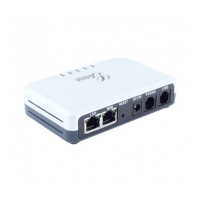As a Callee, select UAC to use caller or proxy server as the refresher, or
UAS to use the phone as the refresher.
Session Timer can be refreshed using INVITE method or UPDATE method.
Select “Yes” to use INVITE method to refresh the session timer.
Invite Ring-No-
Answer Timeout
Default is 40 seconds, the range is between 5 and 300 seconds.
The use of the PRACK (Provisional Acknowledgement) method enables
reliability to be offered to SIP provisional responses (1xx series). This is very
important if PSTN inter-networking is to be supported. A user’s request to
use reliable provisional responses is invoked by the 100rel tag which is
appended to the value of the required header of initial signaling messages.
The HT503 supports up to 5 different Vocoder types including G.711 A-/U-
law, G.726 (Supports bit rates 16, 24, 32 and 40), G.723.1, G.729A/B/E and
iLBC. The user can configure Vocoders in a preference list that will be
included with the same preference order in SDP message. The first
Vocoder is entered by choosing the appropriate option in “Choice 1”. The
last Vocoder is entered by choosing the appropriate option in “Choice 8”.
This field contains the number of voice frames to be transmitted in a single
packet. When setting this value, the user should be aware of the requested
packet time (used in SDP message) as a result of configuring this
parameter. This parameter is associated with the first vocoder in the above
vocoder Preference List or the actual used payload type negotiated between
the 2 conversation parties at run time.
Default is 2, from 1 to 4 for G711/G726/G729 only
For example, if this field is set to be 2 and if the first vocoder chosen is
G729 or G711 or G726, then the “ptime” value in the SDP message of an
INVITE request will be 20ms (2 x10ms)
If the configured voice frames per TX exceeds the maximum allowed value,
the ATA will not accept it and will use and save the precedent configured
allowed value for the corresponding first vocoder choice.

